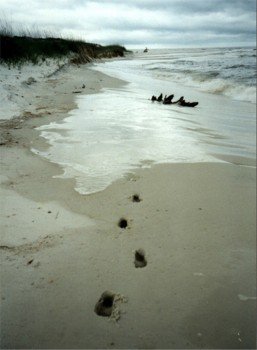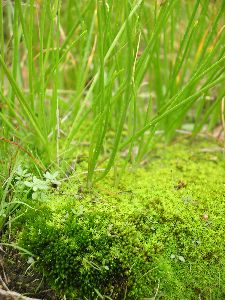

There are, however, times and places where the use of shoes is superfluous. We need only notice each opportunity and remove them. This varies for different individuals, depending on the toughness of their soles and their tolerance for sensations. I tend to often walk barefoot in our house and yard. We have carpet throughout most of our home and I long ago eliminated the sand burrs in our lawn. Now, I might step on the occasional thorn, stick, pebble or acorn, but, for the most part, all I encounter is grass and dirt. The sidewalks and paths in our yard are also foot-friendly.
One of the most interesting things about walking on our lawn is feeling how it changes due to rain or drought. We have a predominately clay soil; when the yard is too dry, the grass feels warm and brittle, and the dirt below is hard as stone. After a good soaking rain, the blades of grass become supple and cool, while the ground has a delightful way of softening just enough to feel like it is alive. Where the earth is bare, the mud can satisfyingly squish between my toes just a little, without letting me sink too far down.

Ever since I can remember, I've used every chance to walk without shoes. Beaches are a favorite. As long as the sand is not freezing cold or burning hot, it affords a wonderfully rich set of sensations. From very loose, dry dunes, to hard-packed rippled tidal flats, sands in different locations have a range from fine and silky to rough as a scouring pad.
Climbing on smooth granite or sandstone cliffs is also a good time to dispense with footwear. By going barefoot, one can grip better, experience the different textures, and feel the pleasant changes of temperature within the rocks. A situation in which shoes are a definite hindrance occurs wherever the mud is deep and sticky. Boots or sandals come off only too easily, while a bare foot rarely gets left behind under 18 inches of muck. One of the more surprising surfaces is a carpet of long pine needles. I discovered this in Michigan many years ago, when I was walking barefoot along a sandy path. The needles were cushiony soft and very easy on the feet.
The soles of our feet are sensitive and useful aids in exploring our environment. Even if we only occasionally remove our shoes and dip our toes into a cool lake or tread on soft grass, that moment of connectedness with the planet beneath us can lift our spirits from the ground up.